
My plate…appetizing? I zipped my jacket trying to stave off the chill in the air blowing off the Bering Sea. It was a dismal gray day. I sat on a plastic chair on the beach next to rusty scrap metal, yet in front of me was a plate of food placed carefully on the impeccable white lace tablecloth.
My new friend thrust upon me…I think we got along pretty well!
I sat alone enjoying my beach feast of whale blubber, tongue, and intestine and suddenly a large baby was thrust upon my lap looking at me smiling with a bottle in hand. People were rapidly taking pictures trying to get the baby and me to smile. I dutifully smiled and cooed at the baby while posing for pictures.
A bad/weird dream you ask?
No…it’s just another day in my traveling life.
Even though I was on an expedition cruise across the top of the world where few humans have gone before, that didn’t mean we had no human contact. As we made our way through the Bering Strait towards Wrangel Island, we anchored atLayrentiya, one of the only villages on the coast of the Chukotka region of the Russian Far East. The lace tablecloths and plastic tables were Layrentiya’s way of saying “Welcome, we are glad you stopped here. We are putting out our very best for you!”
Layrentiya is a small village of 1,300 people representing 30% of the whole district’s population. They get 150 visitors a year when the Spirit of Enderby ship stops to do a cultural tour of the village. And when visitors arrive, the locals put on quite a show.
We had been learning all about the wildlife and birdlife in the Chukotka region during our expedition cruise, and now it was time to learn something about the culture and people of the region.

Lavrentiya ready for visitors!
Layrentiya is not a ‘traditional’ village – it’s a town built by the Soviets in 1928. Eskimos, Chukchis, and Russians live intermixed here. The locals are rather cut off from the rest of Russia and the region. The village has two dirt roads that lead through it, but the town is not actually connected to anywhere via road. All supplies come in on shipping containers. Strangely, it’s actually easier to get around in the winter when the rivers, lakes and sea become a super highway for snow mobiles.
I was eager to learn what it was like to live in the Russian Far East; a typically brutal, dismal environment. From the moment I landed ashore and saw the 3 plastic tables set up with their lace clothes blowing in the wind and the little wooden stage with banner, I knew this was going to be a spectacular day.
What it’s like to Live in the Russian Far East

Landscape
The town was long and simple with two dirt roads, a hospital, bar, police station, school, government building, and church. As we walk down the dirt roads that make up the town there’s no hiding that the village is rough looking. Rusted containers were everywhere as that’s how all of their supplies get delivered and the containers seldom get picked up. The buildings were all made of metal and bars were on all the windows. The building that weren’t made of metal were abandoned and falling apart due to the harsh environment. It really was bleak – but at the same time the town did it’s best to dress up the bleakness with color and life. I immediately noticed that all of the apartment buildings had windows with lace curtains and plants hanging in the windows. Their summers are really short, so I thought it was touching how they used every bit of sunlight they could to grow plants for the short season.
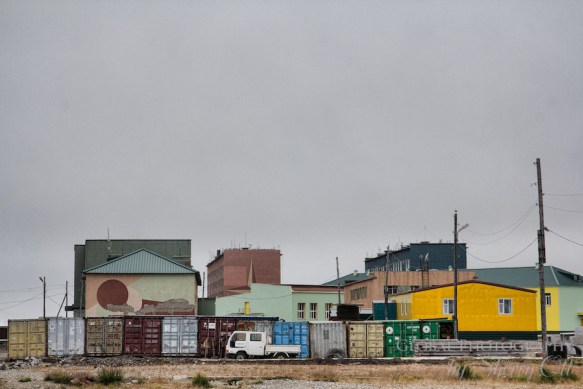
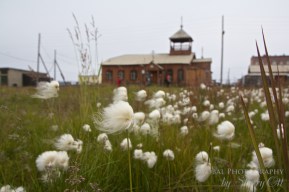
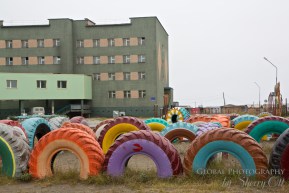
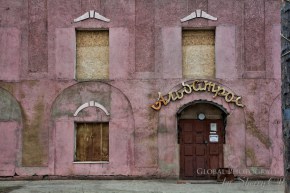
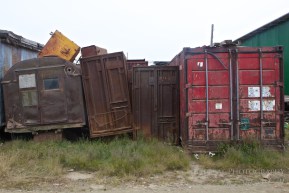
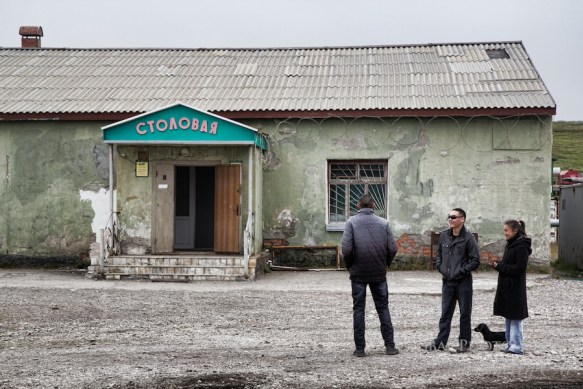
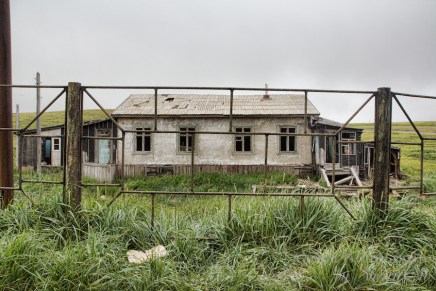

Food
I chew and chew and chew – eating whale is like a full contact sport – you work up a sweat. But I was determined to try everything they provided. Whale and fish was their traditional food. And of course they eat all parts of the animal leaving nothing to waste. I ate whale blubber, tongue, and intestine and lord knows what else. I pretty much eat anything they put in front of me. They had the whale prepared a number of different ways – smoked and pickled were my favorites – but all were surprisingly good – yes, even the intestine. I also had salmon with onion that tasted like sushi. They also had fresh cloudberries (they resembled blackberries) in a tart fruit salad and lichen from the tundra that had been pickled. It was all surprisingly good – and chewy, but after some long winters, I think I might crave some crunchy Doritos.
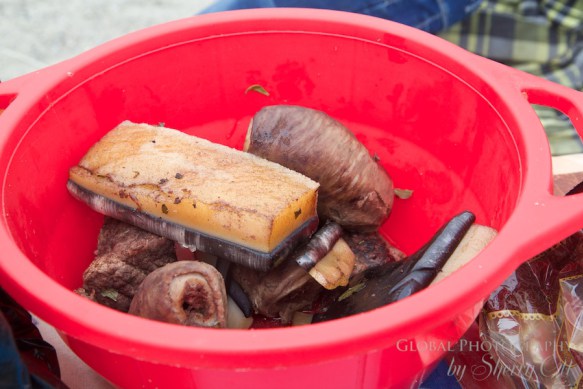
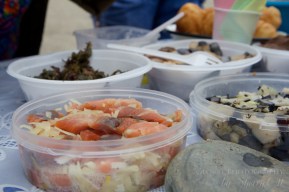
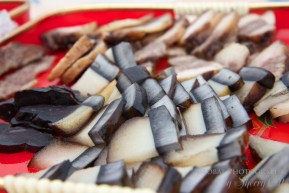
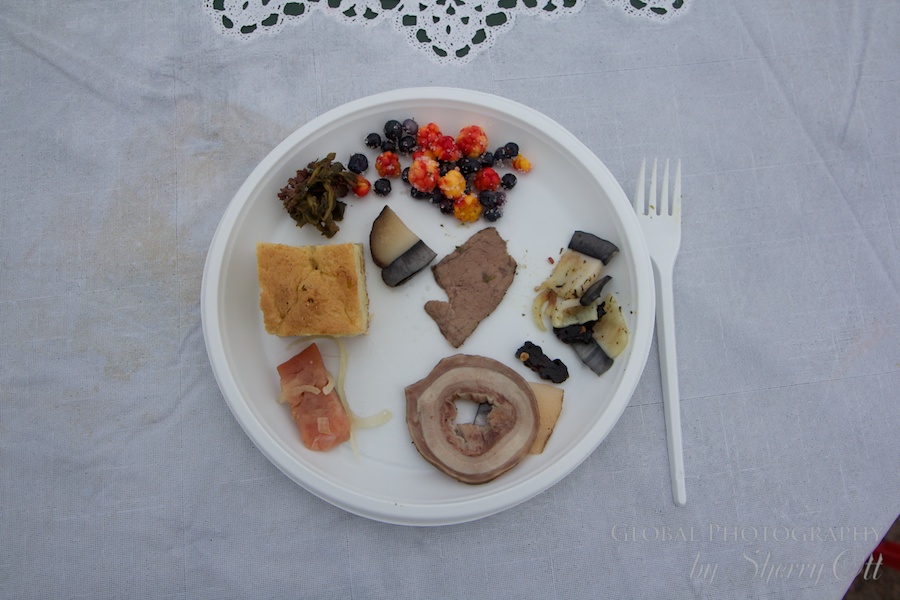
Museum
Yes, this little town had a museum filled to the brim with artifacts and historical representation of what life was like years ago for the Chukchi’s and Eskimos. An elder in the village led us through this fascinating museum filled with taxidermy and taught us all about the hunting techniques of the Eskimos and the Reindeer herders (Chukchi). You are unable to grow crops in this part of the world, so the two livelihoods were reindeer herding or marine hunting. Eskimos were really the fishermen and marine mammal hunters and were more settled than the nomadic reindeer hunters.
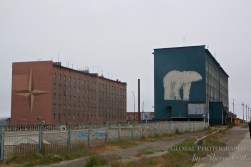

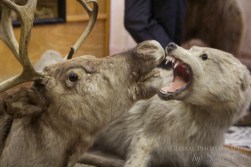
Traditions
From their dress to their dancing, it was a day of learning about cultural traditions. It was so nice to see that the traditions were still being passed to the kids of the village via the families. They all wore traditional warm boots and colorful headgear and smocks. Before each dance they would explain the tradition through our translators. With names like I Clean Mushrooms, Man Who Eats Too Much (my favorite!), Under The Sails, Reindeer Hunters, and Sea Bandits, you could tell that the tradition of story telling has lived on through the generations.
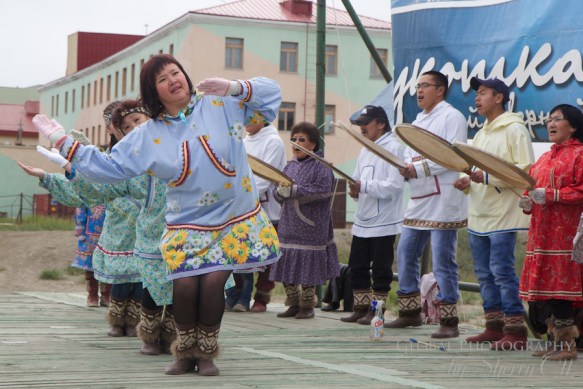
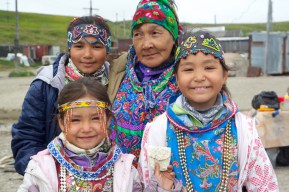
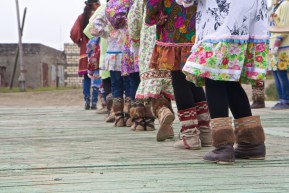


Families
You could tell that the family ties were strong in this town – there were many kids running around playing and many sets of young parents. And of course in a town this size everyone helped each other. The people of Lavrentiya were eager to show us what they had to offer and that’s what I loved about them. They were also eager to capture our reactions as people swarmed around us asking for photos on their cell phones. As I walked around this town of rusted out containers it baffled me how people lived here, but they did, and they seemed like anyone else – happy families, laughing kids, and hearty people who took pride in their heritage.

Kids playing on the beach
I’m always looking for places not affected by tourism on this globe. There are plenty of these places, yet they are hard to get to, much like Lavrentiya. Traveling to the Russian Far East is like traveling back in time. There is nothing quite like it anywhere else in Russia; it’s enchanting. Travel days like these when I get the privilege of seeing such a rare part of the world are absolutely precious to me. In fact, this day was probably my favorite day on the whole cruise – chewy whale blubber, babies, and all.

Sherry Ott is a refugee from corporate IT who is now a long term traveler, blogger, and photographer. She’s a co-founder of Briefcasetobackpack.com, a website offering career break travel inspiration and advice.
Additionally, she runs an around the world travel blog writing about her travel and expat adventures at Ottsworld.com.com.








